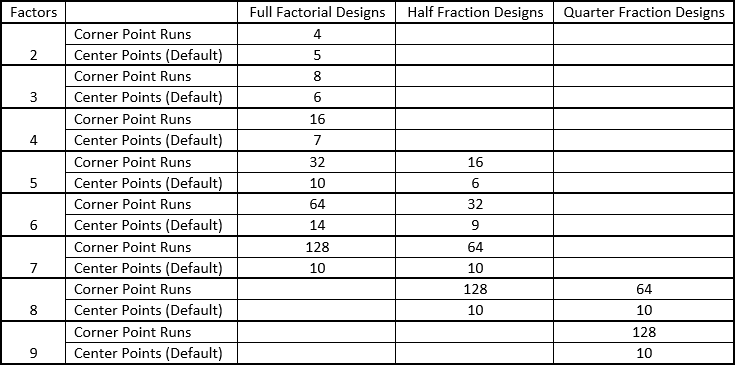Central Composite Designs
In central composite designs, there are three kinds of points involved:
- Factorial points: A two level full or fractional factorial design, using up to nine factors, is embedded in the central composite design. The points associated with this embedded design are also called "corner points," and are indicated by a 1 in the Point Type column on the Data tab.
- Axial points: For each factor, two axial points are calculated as follows: all other factors are set to their coded 0 value (i.e., midway between the low and high — or coded -1 and 1 — values) and the factor in question is set to -alpha and +alpha, where alpha is a value specified by the user. Axial points, sometimes called "star" points, allow estimation of curvature. These points are indicated by a -1 in the Point Type column on the Data tab.
- Center point: All factors are set to the coded 0 value. These points are indicated by a 0 in the Point Type column on the Data tab.
Thus, for each factor, five values are used: -alpha, -1, 0, 1, +alpha.
Available Central Composite Designs
The available central composite designs are shown next. This information is applicable to designs with standard response data, as well as robust parameter designs and reliability DOE.

This table provides information about how many corner point (i.e., factorial) runs will be used in the design, based on the number of factors and the selected fractionality of the design, as well as how many center points will be used by default when a single block is used. For example, if you are using 5 factors and have selected a full factorial design, the design will use 32 corner point runs and will use 10 center points by default, provided that only a single block is used. If you are using 5 factors and have selected a half fraction design, the design will use 16 corner point runs and will use 6 center points by default, provided that only a single block is used.